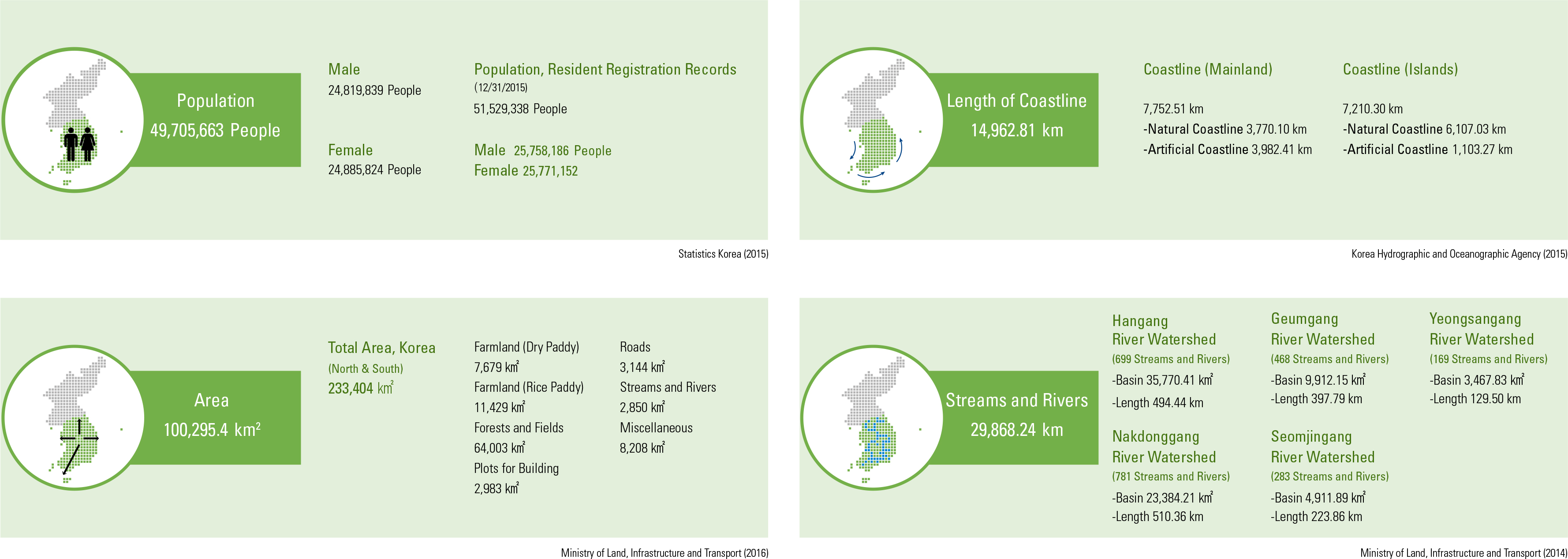English III
The territory of the Republic of Korea consists of the Korean Peninsula and its adjacent islands as defined in the Constitution, and its area is 233,404 km2 (100,295.4 km2 in South Korea). The population of South Korea is 49,705,663, accord- ing to the 2010 Resident Registration Records. It becomes more than 51.00 million when resident aliens are included. Considering that territory is where people live, its natural environments are very important, including topography (i.e., moun- tains, rivers, and coasts), precipitation, tempera- ture, and the climate. These natural environments affect vegetation patterns, and people have built settlements adapting to these natural environ- ments. The land of Korea in the 21st century was shaped by the industrialization of the 20th century, and also was signi cantly in uenced by both natural-environmental and socioeconomic changes. The development of Korean society has in many ways overcome the barriers of natural environments, and has brought the expansion of physical infrastructures. Transportation networks have made inter-regional travel faster, which was once hampered by mountains and rivers. In ad- dition, the nationally planned land development projects such as dam construction and land recla- mation have shaped new environments in South Korea, demonstrating how limitations of natural resources can be transcended. While South Korea had experienced dif culties during the period of industrialization due to limit- ed natural resources, the country has become one of the major economies in the world through in- vestments in human resources and infrastructures. Particularly, the National Land Development Plans, started in 1972, have promoted effective land use by planning, building, and utilizing major national infrastructure facilities. Accord- ingly, people’s lives are improved through public infrastructure. In sum, Korea has used limited resources effectively, both natural and human; has actively participated in the global economy; and, has built a land environment that helps to improve the quality of people's socioeconomic life.
page_2 |

